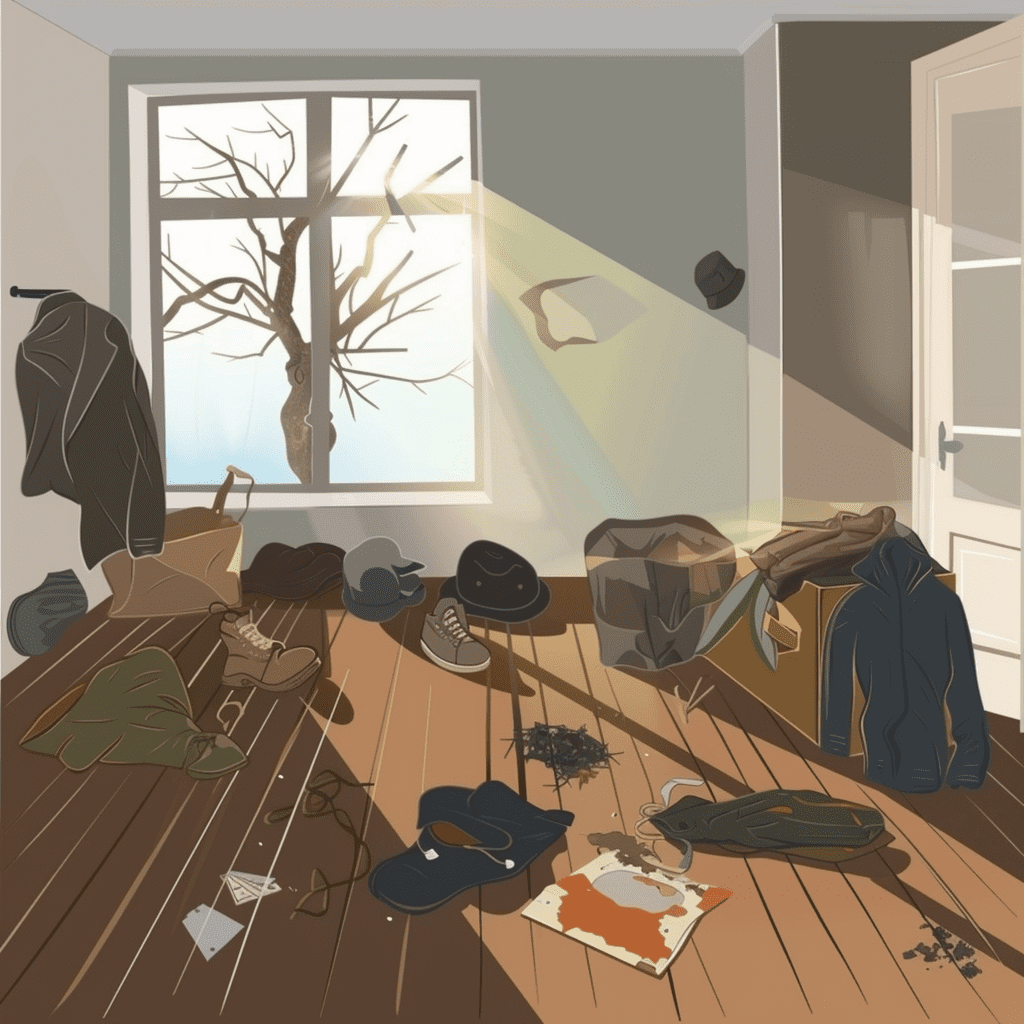Evaluating the Condition of Old Hunting Gear

Assessing our old hunting gear’s condition involves checking for wear and potential repairs, as well as identifying any safety hazards. This ensures that our gear is not just functional but also safe to use.
Determining the Wear and Potential for Repair
The first step is looking at the condition of the gear. Examine guns and rifles for rust and wear on the barrels and stocks. Clean the rifles thoroughly and look for any cracks or weaknesses. Clothes should be checked for tears and worn-out areas, especially around the seams and zippers.
For those of us using a compound bow, we need to inspect the strings and cams. If the strings are frayed, they might need replacing. Look at our arrows too; damaged or warped arrows can be dangerous and affect accuracy. Ammo boxes should be free from dents and rust to ensure they’re secure.
In some cases, minor issues can be repaired. For example, sewing tears in hunting clothes or replacing small parts on our guns. Identifying what we can fix helps prolong the life of our gear and keeps it in usable condition.
Identifying Safety Hazards in Outdated Equipment
Safety should be our top priority when dealing with older equipment. Old guns might have internal issues that are not immediately visible. It’s wise to get them inspected by a professional, especially if they haven’t been used for a while. Look at safety mechanisms to be sure they are functional.
Compound bows can have various safety concerns such as cracked limbs or damaged cams. These can cause the bow to fail when in use, posing a risk. If there’s any doubt, it’s safest to replace questionable components.
Check our clothing for signs of damage that could reduce safety, like tears that might catch on branches. Review all gear for outdated designs that don’t meet current safety standards. Keeping our hunting gear safe ensures a better and worry-free experience in the field.
Repurposing and Recycling Hunting Equipment
We can find new uses for our old hunting gear in creative projects, sustainable practices, and conservation efforts. Let’s explore how we can give our gear a second life.
DIY Projects for Hunting Gear
Old hunting gear can become useful for DIY projects. For example, camouflage clothing can be turned into outdoor blinds or covers for gear. Old backpacks can be used to store fishing tackle or camping supplies. Deer antlers can be crafted into unique home décor items like lamps or coat racks. We can also transform old tree stands into observation decks for bird watching.
Reusing our gear in these ways can save money and reduce waste. It allows us to make the most of what we already have while enjoying new outdoor hobbies.
Sustainable Uses for Outdated Hunting Items
Outdated hunting gear can be repurposed for sustainable uses. For instance, old fishing nets can be used for erosion control in gardening projects. Worn-out boots can serve as planters for flowers or herbs. Broken hunting bows might be repurposed into trellises for climbing plants.
Turning old gear into something useful helps reduce our environmental impact. It keeps items out of landfills and encourages us to think creatively about sustainability.
Conservation Efforts through Gear Donation
Donating hunting gear can support conservation efforts. Many organizations accept gently used gear to help new hunters, especially youth, get started in the sport. This can include clothing, boots, and hunting equipment.
When we donate our old gear, we aid conservation programs and promote ethical hunting practices. By supporting new hunters, we ensure that the tradition continues responsibly and sustainably.
Selling and Trading Old Hunting Gear
Old hunting gear doesn’t have to gather dust in the garage. Properly navigating the market, leveraging memberships, and utilizing online platforms can unlock the hidden value in your equipment.
Navigating the Hunting Gear Market
To begin selling your hunting equipment, it’s crucial to understand the market. Field & Stream and F&S Journal provide up-to-date information on what items are in demand.
Pricing gear like trail cameras, hunting dogs’ accessories, and duck decoys correctly is essential. Consider recent sales on similar items to set competitive prices.
Building relationships with local shops can also be beneficial. Shops might offer trade-ins or cash for used gear, especially if the equipment is well-maintained.
Online Auctions and Hunting Exchanges
Online platforms like eBay and specialized hunting exchanges streamline the selling process. We can use PayPal for secure payments, ensuring safety for both buyers and sellers.
Listings should include clear pictures and precise descriptions of gear. Mention if the item has been used for fishing or includes enhancements like camo finishes.
Options such as free shipping can make listings more attractive. Hunting-specific forums also offer potential buyers looking for gear packages, including trail cameras and decoys.
Leveraging Memberships for Exclusive Benefits
Memberships in groups such as 1871 Club can unlock exclusive benefits. Members often receive discounts and access to special events which can aid in networking and selling gear.
Participating in club events gives us opportunities to trade and sell with fellow enthusiasts. Clubs may also offer merch store rewards, providing incentives for active engagement.
Taking advantage of membership programs often means staying ahead of market trends. Exclusive benefits from memberships can provide us with additional avenues to sell or trade old hunting equipment efficiently.
I’m Cartez Augustus, a content creator based in Houston, Texas. Recently, I’ve been delving into different content marketing niches to achieve significant website growth. I enjoy experimenting with AI, SEO, and PPC. Creating content has been an exciting journey, enabling me to connect with individuals who possess a wealth of knowledge in these fields.

